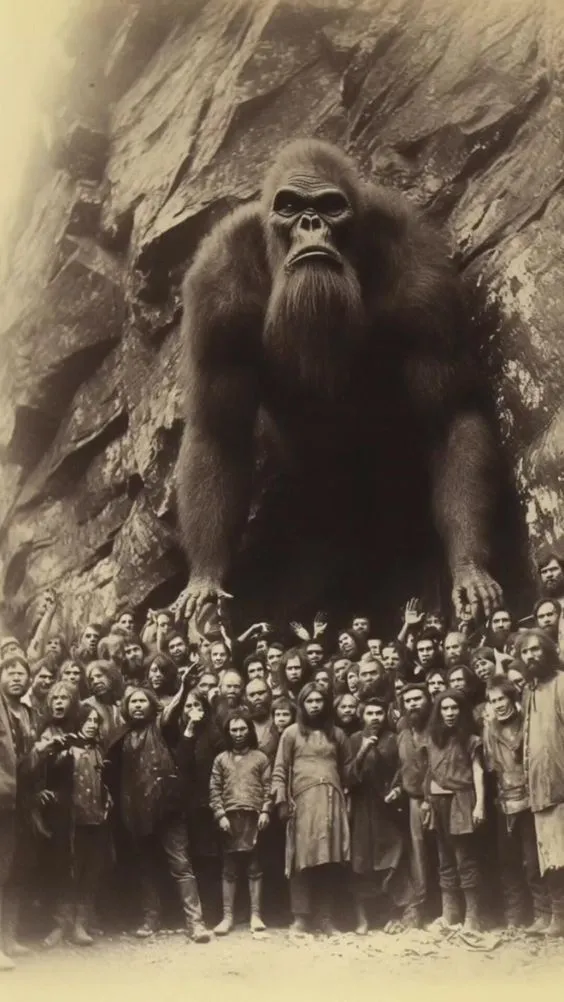Colossal Ape Myths: King Kong’s Quiet Echo?
Throughout history, tales of giant creatures have captured the imaginations of people worldwide. One of the most iconic of these myths is the story of King Kong, a gigantic ape that has been a staple of popular culture since its debut in the 1933 film. However, the concept of colossal primates predates Hollywood by centuries, woven into the fabric of ancient myths and legends. This article delves into the origins of these tales, exploring the myths of giant ape encounters in antiquity and their enduring legacy.

The Roots of the Myth
The fascination with large primates can be traced back to ancient civilizations, where tales of enormous beasts often served as metaphors for nature’s power and the unknown. In Greek mythology, for instance, there were stories of the Gigantes, a race of giants born from Gaia, the Earth goddess. While not specifically apes, these giants symbolized the raw, untamed force of nature, much like King Kong.
Similarly, ancient Indian texts such as the Ramayana feature Hanuman, a divine monkey who possesses extraordinary strength and size. Though Hanuman is a benevolent figure, his depiction reflects the awe and reverence ancient cultures held for the animal kingdom’s mightiest creatures.
Ape Legends Across Cultures
Various cultures have their own versions of the giant ape myth. In African folklore, there are tales of the Nandi Bear, a large, ferocious creature said to inhabit the forests of Kenya. Descriptions of the Nandi Bear often include ape-like features, leading some to speculate that these stories could be rooted in ancient encounters with unknown primates or exaggerated accounts of real animals.
In the Americas, the Sasquatch or Bigfoot legend speaks of a towering, hairy humanoid that roams the wilderness. While not exclusively an ape, the similarities to King Kong are striking, suggesting a universal human fascination with the concept of a giant, mysterious primate lurking in the shadows.
Historical “Evidence” of Giant Apes
Throughout history, explorers and naturalists have reported sightings of enormous apes, adding a layer of intrigue to the myth. One notable account is that of Sir Samuel Baker, a 19th-century British explorer who claimed to have encountered a massive gorilla in Africa. His descriptions of the creature’s size and strength bear a remarkable resemblance to the fictional King Kong, blurring the lines between myth and reality.
These reports, combined with the discovery of large primate fossils such as Gigantopithecus, a prehistoric ape that stood up to ten feet tall, have fueled speculation about the existence of giant apes. While no concrete evidence has been found to support the existence of King Kong-like creatures, these discoveries keep the legend alive in the public imagination.
King Kong and Modern Culture
The release of the original “King Kong” film in 1933 cemented the giant ape’s place in modern mythology. The story of a colossal gorilla captured from a remote island and brought to New York City captivated audiences and has since been retold and reimagined in numerous films, books, and other media.
King Kong’s enduring appeal lies in its exploration of themes such as the clash between nature and civilization, the fear of the unknown, and the consequences of human hubris. These timeless themes resonate with audiences, ensuring that the legend of King Kong remains relevant.
Conclusion
The myth of King Kong and other giant ape encounters in antiquity continues to fascinate and inspire. These stories, whether rooted in ancient folklore or modern cinema, reflect humanity’s enduring curiosity and awe towards the natural world. As we continue to explore the mysteries of our planet, the legend of King Kong serves as a reminder of the power and wonder that lies beyond our understanding. The giant ape, whether real or imagined, symbolizes the primal forces that shape our world and the timeless allure of the unknown.







